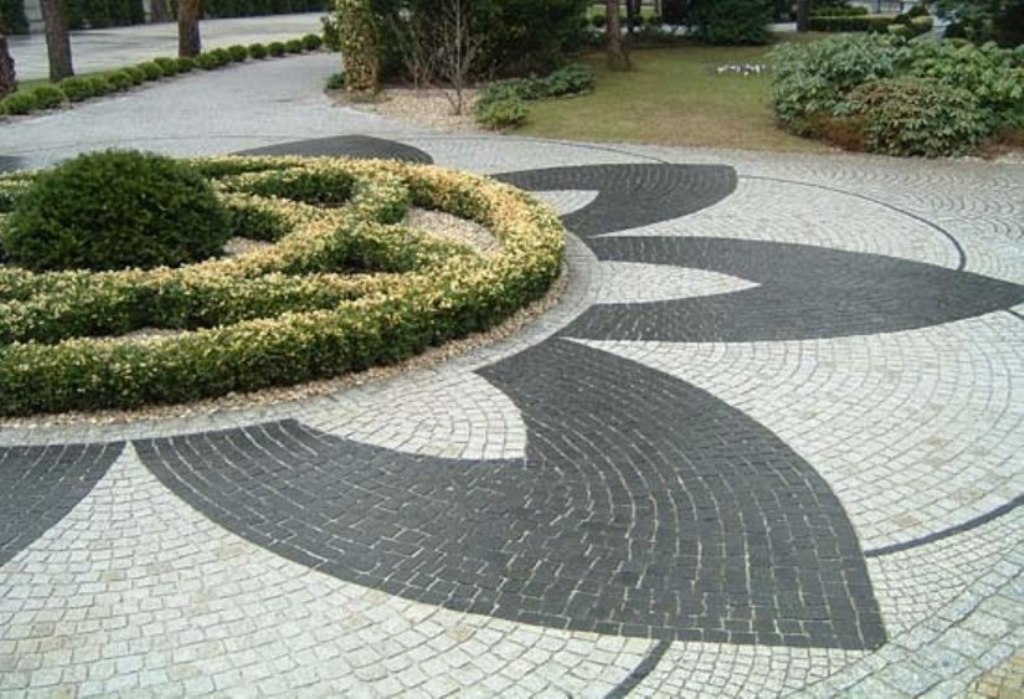Laying paving stones with your own hands: tips and tricks
Paving stones or paving slabs are a practical and durable material that is widely used to create a durable pedestrian pavement. It makes beautiful sidewalks, squares, neat garden paths and blind areas around the house. The paved seating area in the garden will remain clean and comfortable at any time of the year. A wide range of shapes and colors allows you to choose the material for every taste and for every need. As for laying paving stones with your own hands, there is nothing supernatural in this, and with due diligence, any hardworking owner will be able to cope with this work.
First of all, we offer to get to know the object of discussion better and find out what paving stones are. This is a building material created specifically for road pavement in the early 19th century. Initially, paving stones were used not only for sidewalks, but also for the roadway, since there was no better alternative, but with the advent of asphalt, the situation changed. Today, in some cities of Europe, you can meet the very old paving stones made of natural stone, but in rare cases it was made from durable soaked wood. So, in Lviv, an unusual wooden paving stone is still preserved. Modern industry offers a lot of options for materials for the production of paving stones, however, to this day, products made from natural stone are of the highest quality and most expensive.
Initially, paving stones had a strictly rectangular shape, but today you can find rounded and even figured products. As for the color, it may vary depending on the natural pigment added to the raw material. Of course, elements made of natural stone have the appropriate color. They are made from especially dense rocks: granite, basalt or marble. Granite is considered the most popular due to the availability and relative ease of processing of raw materials. Paving stones, depending on the processing method, can be chipped, sawn or chipped-sawn.
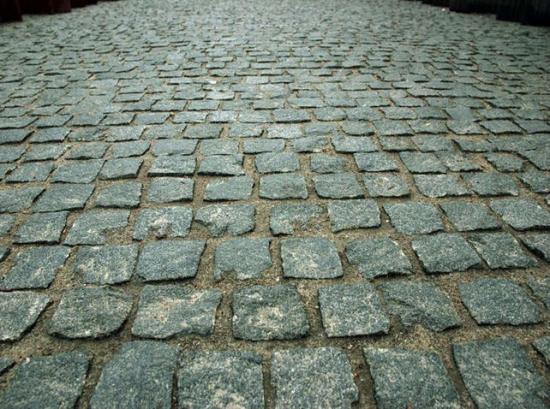
But most often on the streets of the city you can find concrete paving stones, since this is the most economical and practical material. It is made of high-density concrete, which, after kneading, is subjected to vibrocompression, resulting in paving stones of the same shape and size. The elements are clearly adjusted to each other, resistant to temperature changes and heavy loads.
There is also clinker pavers, for the manufacture of which special high-strength grades of clay are used. Such products are very similar to red bricks, because they are made of the same material. Very beautiful paved compositions are obtained from clinker paving stones, it withstands serious loads and can serve for a very long time, retaining its color and shape.
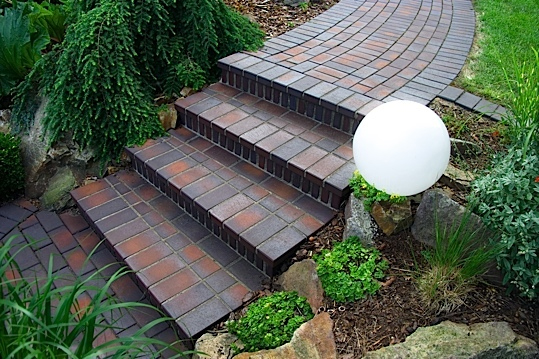
What are the benefits of laying paving stones with your own hands:
- The most important advantage of the material is strength and reliability, so if you have built a stone house that will last at least a century, it is reasonable to ennoble the site with stone paving garden paths.
- Paving stones do not pose a risk to human health, animals or the environment. This is a completely natural material that does not emit harmful substances during operation.
- Comfortable use - in the case of garden paths, the main problem is the formation of puddles and pollution after rain. In the case of paving stones, water will seep through the tile joints into the ground through the drainage pad, preventing the formation of puddles.
- This is an extremely durable material - products made of artificial stone will last at least 30 years, not to mention the paving stones made of natural stone or clinker clay, which, as practice shows, is perfectly preserved for several centuries.
- High wear resistance makes pavers an ideal covering in regions with especially frosty winters.
- This is an absolutely universal material, which, in which case, can be reused.
- In case of damage to any element, it is not necessary to dismantle the entire coating - it is enough just to replace this element with a new one.
- High aesthetics and natural appearance allow paving stones to easily fit into any landscape or become an original connecting element of the exterior of the house with the site.
- The technology for laying paving stones with your own hands is quite simple, you just need to familiarize yourself with the theory, prepare the necessary tools and materials, and clearly follow the instructions.
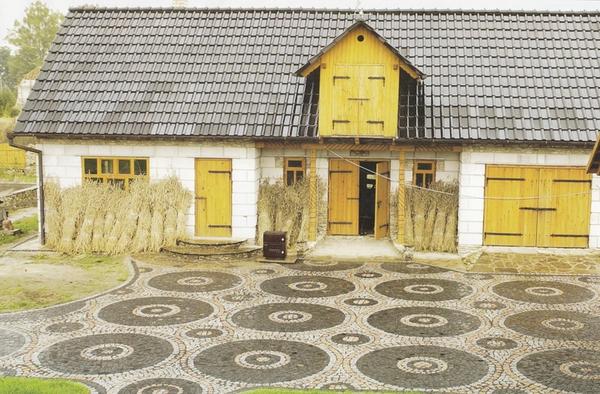
Unfortunately, this wonderful material also has its drawbacks, but they can’t be called serious. So, for example, the cost of some types of paving stones will make even wealthy owners think about it, but it is fully justified by the comfort of use and the durability of the coating. If you still buy natural stone paving stones, get ready for the fact that you will need special equipment to process it. Also, the installation of any pavers requires the creation of a drainage cushion, and this work takes almost as much time as the laying itself.
How to lay paving stones
When laying paving stones in the country with your own hands, it is extremely important to follow the technology, since not only the appearance of the coating depends on it, but also its durability. And the main condition for high-quality laying is the creation of an even and dense base. To do this, you need to properly level the ground, removing all roots and plants, filling in all the holes and cutting off the bumps, and then treat the surface with an electric or pneumatic rammer. If it was not possible to get such a tool, a rammer can be made from a thick log.
It is also necessary to prepare special tools that will help you make an even and tight laying of elements:
- Master OK;
- mallet (wood or rubber);
- pegs;
- vibrorammer;
- cord;
- building level;
- fine river sifted sand;
- cement not lower than M400;
- metal pipe of arbitrary diameter;
- a watering can or hose with a spray nozzle;
- rake;
- whisk or broom.

To determine the required number of tiles, carefully consider the layout of the site, taking into account the location of all paved sectors.
Helpful Hint: All paved surfaces should have a slight slope of 5mm/1m². This is a necessary condition for self-removal of rainwater from the surface. Otherwise, moisture will stagnate and eventually wash out the drainage under the tile, causing the coating to collapse. And, of course, the slope should be directed towards the sewer drain or just from the house to the club, lawn or garden.
Step-by-step instructions for laying paving stones with your own hands:
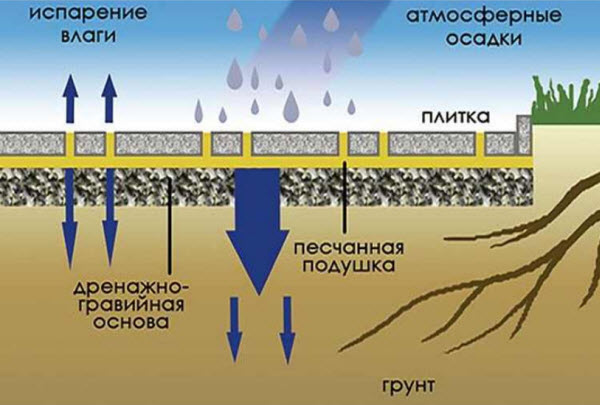
Helpful Hint: Start laying tiles from the most visible area that is adjacent to the threshold. Adjust each tile with a mallet so that it is flush with neighboring elements. Check the levelness of the surface every 1.5-2 m, allowing differences of no more than 5 mm. A chopping cord stretched in advance between the pegs will help you paving evenly and accurately.
Summarize the above information video about laying paving stones with your own hands:
Paving stone laying: photo

